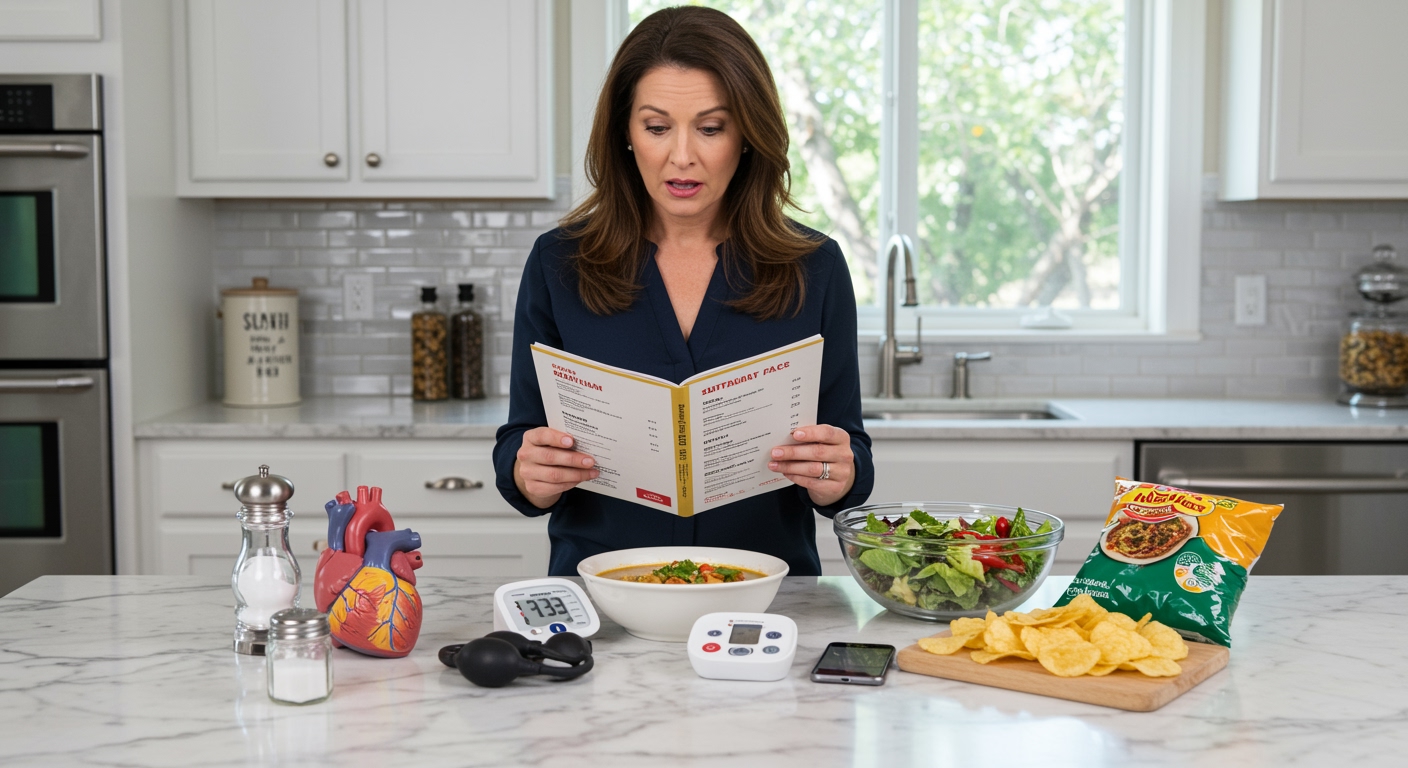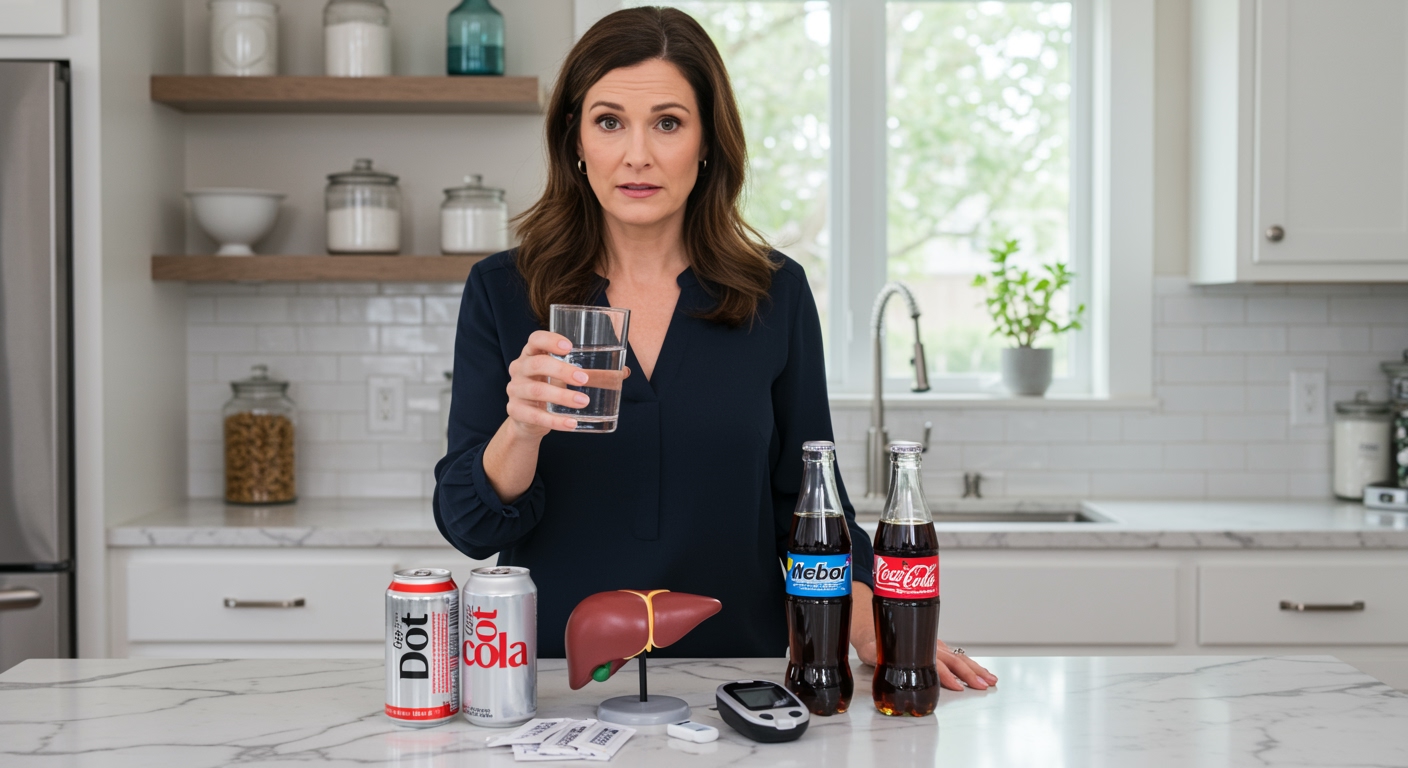✪ Key Highlight: Health experts demand restaurants display salt content on menus as hidden sodium levels cause heart disease and stroke nationwide.
Introduction
Your favorite restaurant meal might be slowly killing your heart.
Health experts across the nation are now demanding that restaurants display salt content on their menus because hidden sodium levels are causing widespread heart disease, high blood pressure, and stroke among unsuspecting diners.
Hi, I’m Abdur, your nutrition coach and today I’m going to analyze this critical news about restaurant salt content disclosure and why this simple change could save thousands of lives.
Why Are Restaurants Hiding Salt Content From You?
Most restaurants currently only display calorie counts on their menus, but they keep sodium information hidden from plain sight.
The 2018 federal law requires restaurant chains with 20 or more locations to show calories, but sodium content remains buried in fine print or available only upon request.
This creates a dangerous knowledge gap because most people focus on calories while ignoring the silent killer lurking in their meals.
Dr. Chris van Tulleken, an infectious diseases doctor, calls displaying salt content a potential game-changer in fighting heart disease and stroke.
The truth is that restaurants use excessive salt to enhance flavor and mask the taste of lower-quality ingredients.
When you cannot see sodium numbers, you cannot make informed decisions about your heart health.
This information asymmetry puts your cardiovascular system at serious risk every time you dine out.
✪ Fact: Restaurant foods are the largest source of excess sodium in the American diet according to recent research.
How Much Hidden Salt Are You Really Eating?
A recent study in the Journal of the American Medical Association revealed shocking sodium levels in common restaurant items.
Many restaurant salads contain more salt than a bag of potato chips, completely destroying the illusion of healthy eating.
Soups, which people often choose as lighter options, frequently pack an entire day’s worth of sodium in a single bowl.
Even desserts contain surprising amounts of salt, adding to your daily intake when you least expect it.
The Dietary Guidelines for Americans recommend less than 2,300 milligrams of sodium per day for adults.
However, most Americans consume nearly double this amount, primarily from restaurant and processed foods.
Dr. Sonia Angell, former director of the New York City Department of Health, points out that people think they are making healthy choices when ordering salads, but many contain more salt than obviously unhealthy options.
✪ Pro Tip: Ask your server for nutrition information before ordering to avoid hidden sodium bombs in seemingly healthy dishes.
What Health Risks Come With Hidden Restaurant Salt?
Excessive sodium intake directly causes high blood pressure by forcing your kidneys to retain more water.
This extra fluid increases the volume of blood in your vessels, creating higher pressure against artery walls.
Over time, this elevated pressure damages your cardiovascular system and increases your risk of heart attack and stroke.
High sodium also makes your heart work harder to pump blood throughout your body.
The constant strain can lead to heart failure, where your heart cannot pump blood effectively to meet your body’s needs.
Your kidneys suffer too because they struggle to filter excess sodium from your bloodstream.
This can progress to chronic kidney disease, requiring dialysis or transplantation in severe cases.
✪ Note: Even one high-sodium restaurant meal can cause temporary blood pressure spikes that last for hours.
Are Current Warning Systems Working?
Some cities like New York and Philadelphia require sodium warnings on menu items containing 100 percent of the daily recommended value.
However, research shows that if the threshold were lowered to 20 percent of daily value, nearly half of all restaurant menu items would need warnings.
This reveals just how salt-saturated restaurant food has become in our modern dining landscape.
The FDA recently proposed voluntary sodium reduction targets for restaurants, but public health advocates argue these measures are too weak.
Voluntary guidelines allow restaurants to continue serving dangerous sodium levels without real consequences.
Health organizations like the Center for Science in the Public Interest are demanding stronger policies with mandatory labeling requirements.
They believe warning labels can both inform customers and pressure restaurants to reduce salt in their recipes.
✪ Fact: Thousands of consumers have joined campaigns demanding restaurants and policymakers take action on excess sodium.
What Can You Do Right Now?
Start by asking your server for nutrition information before placing your order at any restaurant.
Most chain restaurants have this data available, even if they do not display it prominently on menus.
Choose grilled, baked, or steamed preparations instead of fried or sauced dishes that typically contain more hidden sodium.
Request dressings, sauces, and condiments on the side so you can control how much salt enters your meal.
Consider splitting large restaurant portions with someone else, as this automatically reduces your sodium intake by half.
Support restaurants that voluntarily display comprehensive nutrition information, including sodium content, on their menus.
Contact your local representatives to advocate for mandatory sodium labeling laws in your area.
✪ Pro Tip: Cook more meals at home where you control every ingredient and can gradually reduce your taste preference for salty foods.
The Bottom Line
Restaurants must display salt content on menus because hidden sodium is literally killing people through heart disease, stroke, and kidney failure.
Your health is too important to be left to guesswork when dining out.
I would love to hear your thoughts about restaurant sodium labeling in the comments below, and please share any experiences you have had discovering hidden salt in your favorite meals.
References
At NutritionCrown, we use quality and credible sources to ensure our content is accurate and trustworthy. Below are the sources referenced in creating this article:
- Center for Science in the Public Interest: How Salty is Too Salty? A Look at High-Sodium Menu Items
- FDA: Menu Labeling Requirements
- NACCHO: Menu Labeling Requirements Now in Effect
- Dietary Guidelines: Dietary Guidelines for Americans 2020-2025
- FDA: FDA Finalizes Updated Healthy Nutrient Content Claim





